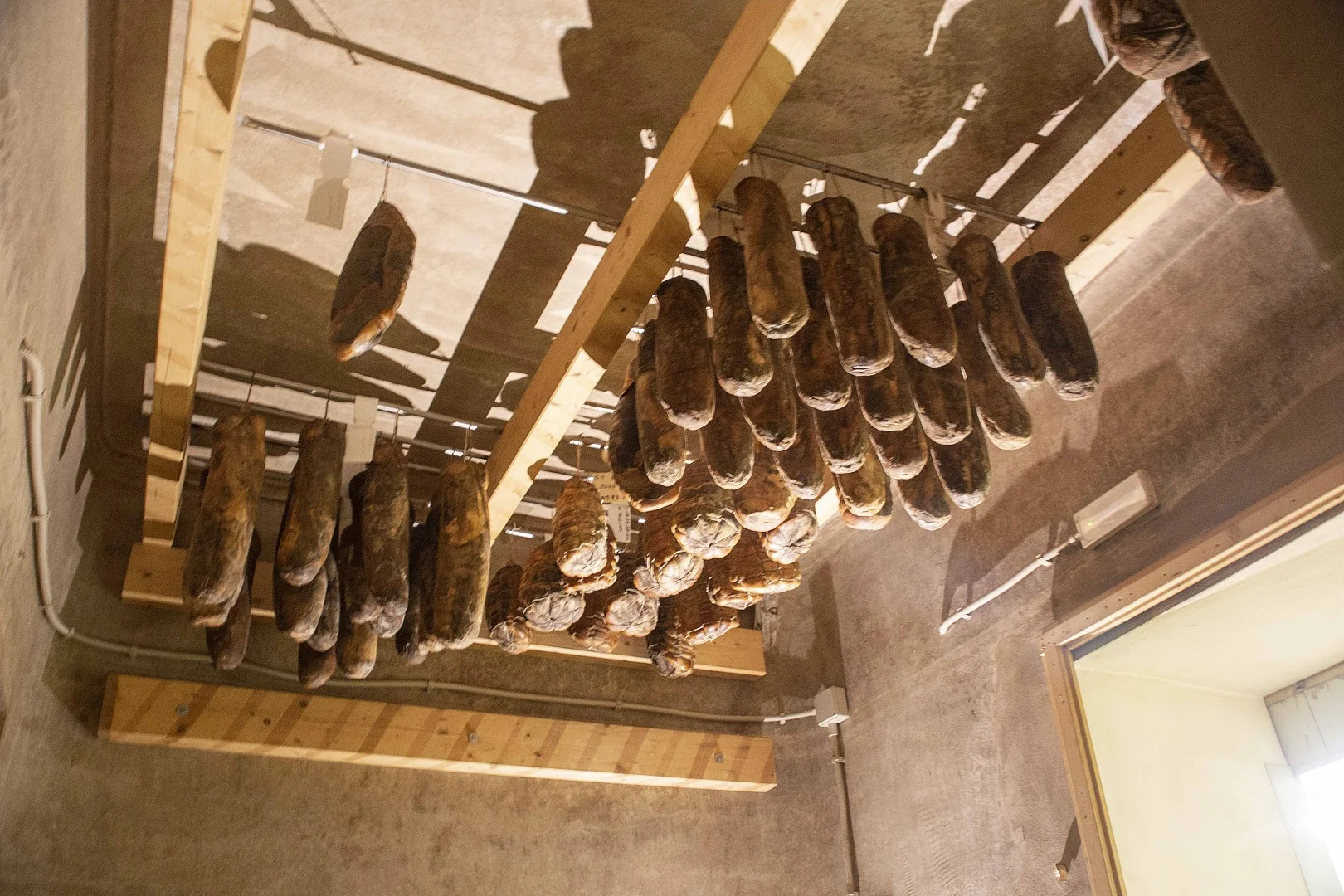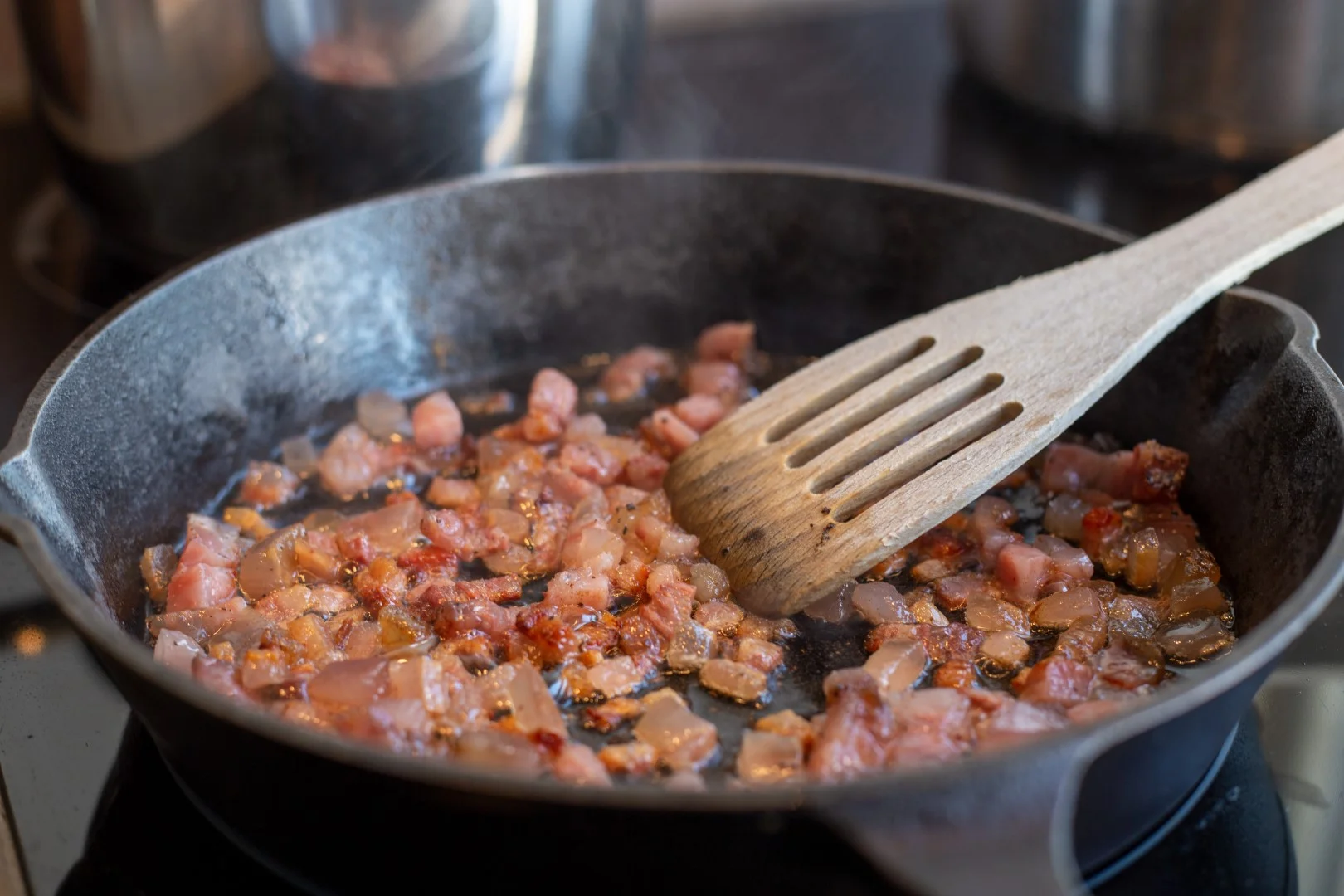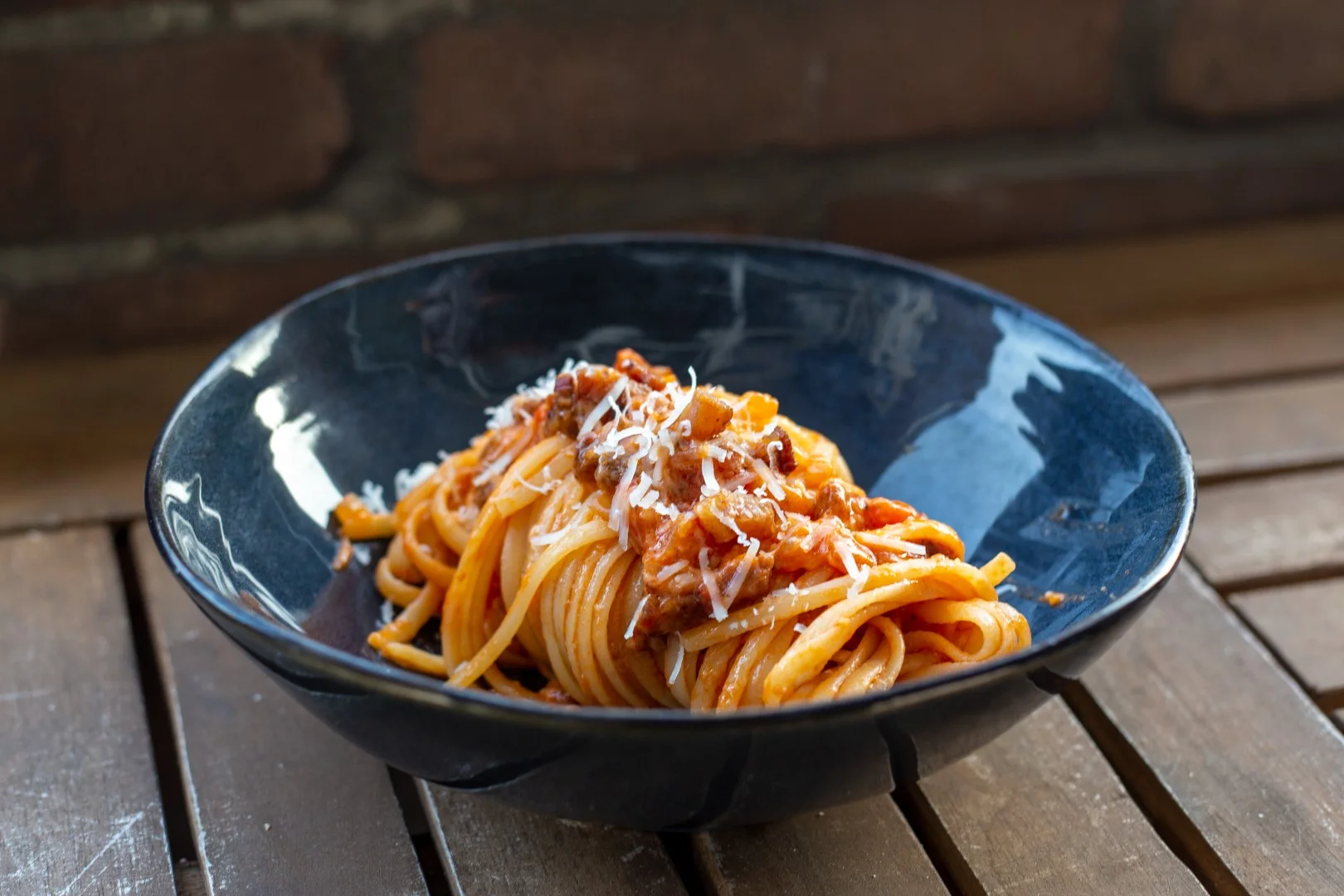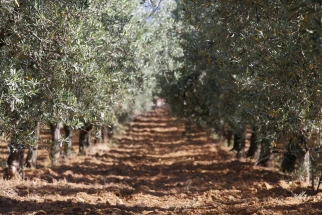
The cheek of the pig
The secret of Guanciale
If you've ever had the opportunity to explore Italian cuisine, you've probably heard of guanciale. This extraordinary ingredient is a true treasure in the Italian culinary world, and it has the power to transform simple dishes into tasty masterpieces. In this blog post, we will take you on a culinary journey through the world of guanciale and show you how to use it to elevate your Italian dishes to a higher level.

What is Guanciale
Guanciale is a traditional Italian bacon product that originates from the pig's cheek. It distinguishes itself from regular bacon by its unique texture and flavor. Guanciale is first rubbed with salt and pepper, then air-dried, usually for several months, in the fresh Italian air, allowing it to undergo a transformation that elevates it to culinary excellence. During this aging process, the pork cheek loses moisture, concentrating its flavors and intensifying its savory essence. The result is a piece of bacon with a delicate, creamy texture that melts in your mouth and a deep, savory taste that lingers on your palate, making it a sought-after ingredient in many Italian dishes.
Uses of Guanciale
- Pasta alla Carbonara: Perhaps the most famous dish with guanciale is pasta alla carbonara. In this dish, guanciale is fried until crispy and then mixed with eggs, Pecorino cheese, and black pepper to create a creamy, silky sauce. Combined with spaghetti or Rigatoni, this results in an unforgettable dish.
- Pasta all'Amatriciana: Another classic is pasta all'Amatriciana. Here, guanciale is diced and fried with onions, tomato sauce, and red pepper flakes. The result is a spicy, savory sauce that pairs perfectly with Linguine or thick tubular pasta like Paccheri. (read the full recipe here)
- Pizza: Guanciale can also be used as a topping for pizza. The salty, crispy texture adds a delightful crunch to every bite. Try it on a white pizza with mozzarella and fresh rosemary.
- Soups and Stews: Guanciale can be added to soups and stews to impart extra depth of flavor. It slowly melts and imparts a rich, meaty taste to the dishes.
- Salads: If you're looking for a crispy, salty topping for your salads, try baking guanciale until it's crispy and then crumble it over your green salad.
- Fusion Dishes: Let your creativity run wild! Guanciale is essentially bacon, so it can go on your burger, or even in mashed potatoes! This adds an extra dimension to your dish and makes it a little more special.
Francesco's Guanciale
In Martina Franca, Francesco Carriero crafts artisanal, top-quality guanciale. His guanciale is first salted and then marinated in cooked wine and black pepper. Next, the guanciale is hung in a smoking room for two days, where it's smoked with oak bark and almond shells. Finally, the guanciale is dried for four to five months. Everything is done by hand in the traditional way. Not a single part of the process is automated because, as Francesco proudly says, he wants to oversee every aspect of the process. Quantity is not important here; only quality matters. This philosophy has made the Caroli family a part of the Slow Food movement that is gaining more attention in Italy.

Tips for Using Guanciale
- Slice guanciale into thin slices or cubes for even cooking. Cubes become crispy all around, but by cutting the bacon perpendicular to the layers into slices, you can include some meat and some fat in each piece. According to some chefs, this is essential in dishes like Carbonara.
- Cook guanciale over low heat to make it crispy and concentrate the flavor.
- Use the fat that is released when cooking guanciale to add extra flavor to your dishes. Guanciale releases a lot of fat. We Dutch people tend to throw away this fat for health reasons. Do not do this! The fat from guanciale is often necessary to make classic Italian pasta dishes taste just as good as on vacation.
- Be cautious about adding extra salt to your dishes, as guanciale is naturally salty.
Essential in Authentic Italian Cuisine
In short, guanciale is an essential ingredient in Italian cuisine. Its rich flavor and unique texture add unparalleled depth to numerous dishes. So, the next time you want to bring the flavors of Italy home, consider using guanciale and let your taste buds dance to the melody of Italian cuisine. Buon appetito!
However, as with all ingredients, not all guanciale is the same. Many chefs (both amateur and professional) are now convinced of Francesco's delicious guanciale. Discover it for yourself now!




.png?resolution=322x0&quality=90&type=webp&background=FFFFFFFF&force_jpg_crop=1)
.jpg?resolution=322x0&quality=90&type=webp&background=FFFFFFFF&force_jpg_crop=1)
